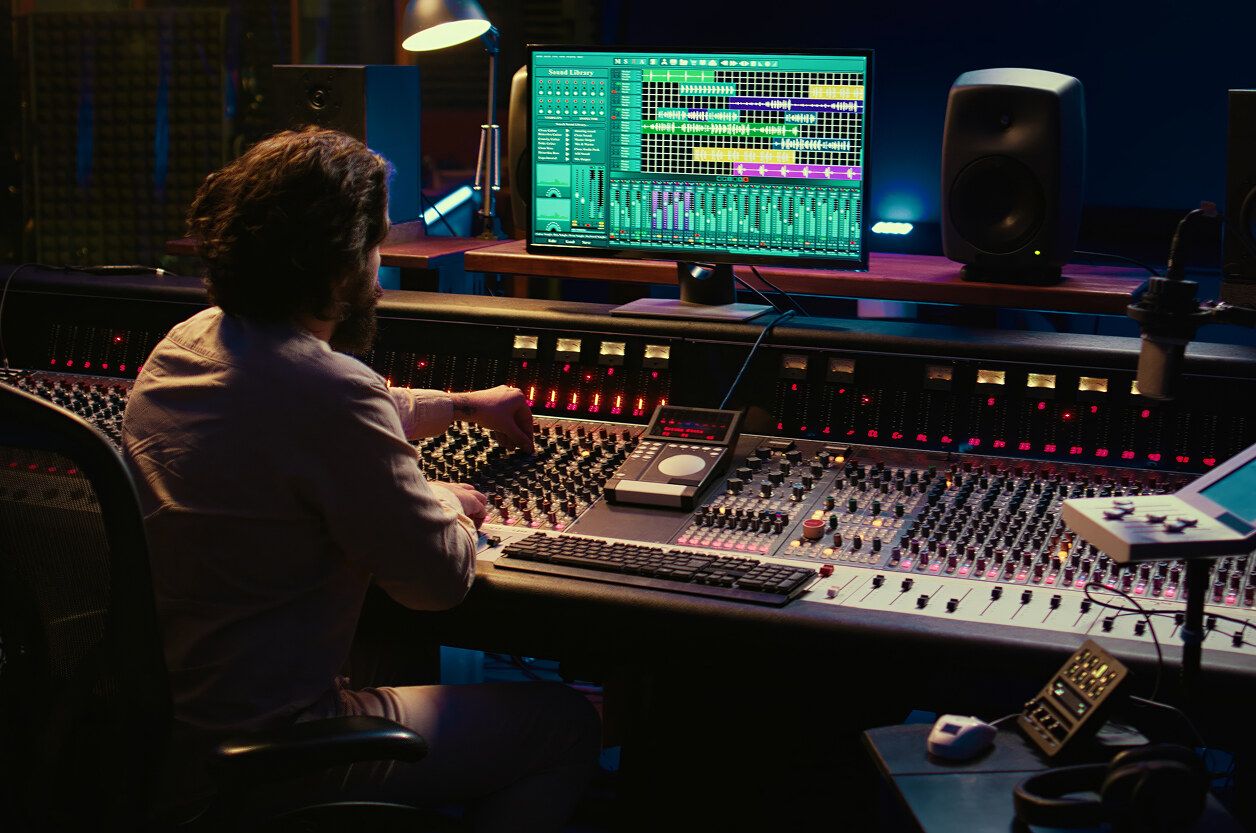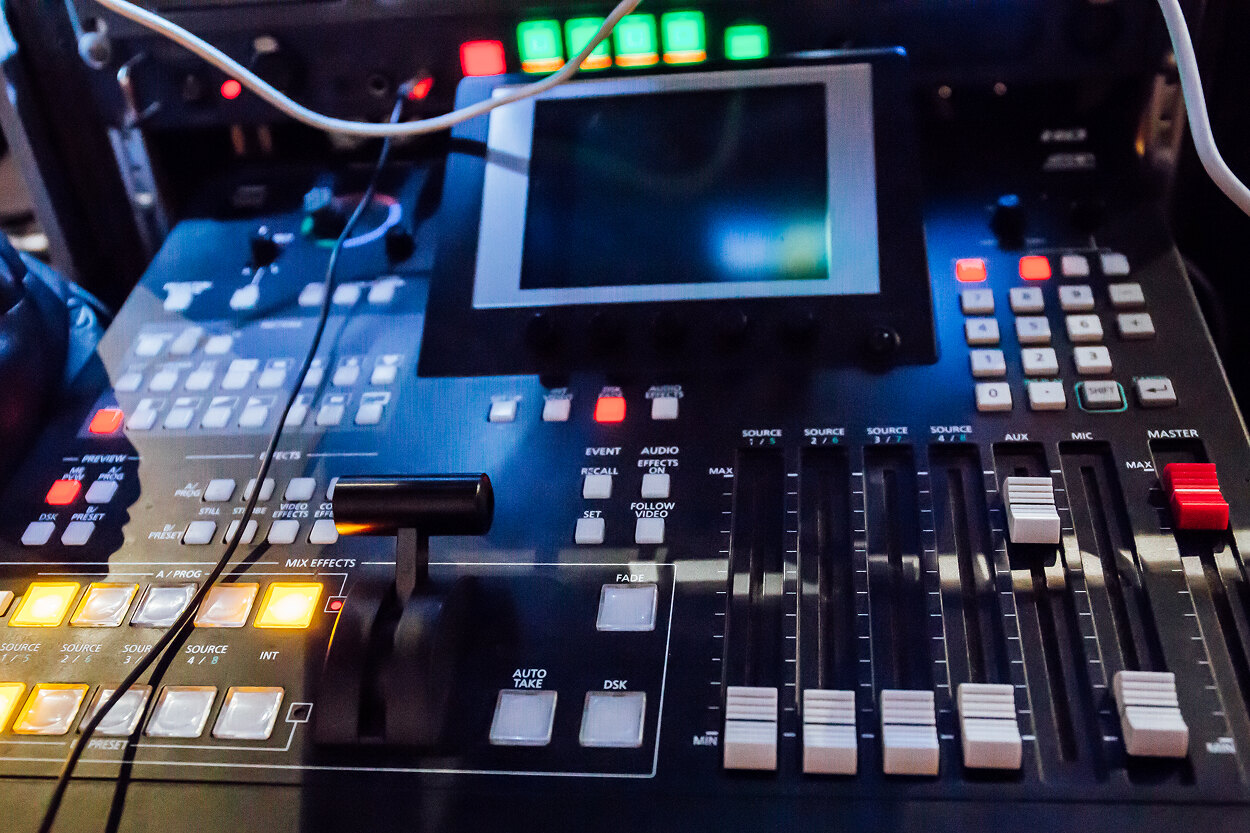From FPGA to Interfaces: Building a Custom ProAV Stack

The transition from legacy AV systems to modern, IP-based ProAV solutions is accelerating. Vendors, integrators, and device manufacturers are now expected to deliver more than signal conversion — they must deliver performance, ultra-low latency, flexibility, and seamless integration with a growing number of standards and protocols. That’s where a custom ProAV stack — designed from the ground up — becomes a competitive edge.
In this article, we break down how such a stack is architected, what role FPGAs play, and how to approach integration challenges to deliver purpose-built AV products.
Why a Custom Stack?
Off-the-shelf AV components are rarely optimized for the specific needs of vertical markets like broadcast, healthcare, or control rooms. A universal encoder-decoder pair might not offer the required I/O flexibility, timing precision, or video/audio format support. That’s why engineering teams are increasingly building end-to-end AV systems around configurable blocks: FPGAs, embedded processors, and modular interfaces.
A custom AV stack allows you to:
- Tailor video and audio processing to latency-sensitive applications
- Integrate specific interfaces (ST 2110, HDMI 2.1, SDVoE, USB 3.x, etc.)
- Embed control logic or AI for intelligent switching or analytics
- Optimize for power, cost, and thermal envelope
- Meet compliance with AV-over-IP and broadcast protocols
FPGA as the Heart of the System
FPGAs (Field Programmable Gate Arrays) provide deterministic performance and massive parallelism. They’re the ideal platform for:
- Video scaling and color space conversion
- SDI to IP bridging (e.g., SDI ⇔ ST 2110)
- Audio de-embedding and mixing
- Low-latency AV routing
Vendors like AMD (Xilinx), Intel (Altera), and Lattice offer AV-focused platforms with IP cores for HDMI, DisplayPort, and TSN (Time-Sensitive Networking). These building blocks help teams skip months of development while maintaining flexibility.
In 2025, we’re seeing even more integration of edge AI cores within FPGAs — enabling tasks like stream classification, logo detection, and audio fingerprinting directly on the chip.
Audio and Video Interfaces: Mixing Standards
One of the biggest ProAV challenges is bridging multiple interface standards. A custom stack must often support:
- Legacy I/Os: SDI, CVBS, AES3
- Modern interfaces: HDMI 2.1, DisplayPort 2.0, USB-C
- Networked AV: ST 2110, Dante, NDI, AVB
- Control interfaces: RS-232, GPIO, IP-based (REST, WebSocket)
Each interface comes with timing, jitter, and bandwidth constraints. Choosing the right PHYs (physical layer chips), transceivers, and buffer logic is essential. In some cases, these functions can be offloaded to the FPGA to reduce BOM complexity.
Processing and Control Layer
Behind every AV interface is a processing layer that orchestrates video routing, encoding, UI, and external communications. Depending on complexity, this layer could be:
- An MCU (for basic routing and configuration)
- An embedded Linux system on SoC or MPU (for GUI, network control, OTA updates)
- A dual-chip system with MCU + FPGA or SoC + FPGA for maximum performance
Common tasks handled here include:
- Signal path control and switching
- REST/MQTT/WebSocket APIs for device control
- Integration with broadcast automation systems
- Remote diagnostics and monitoring
A Yocto-based Linux build enables tailored features like secure boot, custom UI frameworks, and AV-specific daemons.
Network Layer: AV-over-IP Foundation
For most modern ProAV systems, AV-over-IP is not a feature — it's the backbone. ST 2110, IPMX, and proprietary schemes like SDVoE define how video is packetized, timed, and prioritized.
A good custom stack handles:
- PTP clock sync (IEEE 1588)
- Multicast stream routing
- Traffic shaping (with DPDK or FPGA)
- QoS enforcement for low latency
This layer is often a collaboration between the FPGA (real-time packet processing), the Linux OS (management plane), and the PHY (physical Ethernet interface with TSN).
In 2025, with 10G and 25G interfaces becoming standard in broadcast and event venues, smart integration of these layers is critical for stream reliability.
AI/ML Capabilities at the Edge
With more ProAV devices requiring real-time insights, edge AI is no longer optional. A camera switcher might need:
- Face or speaker detection
- Real-time crowd estimation
- Shot boundary detection
- Automatic PTZ camera control
This logic can be implemented either inside the FPGA (using AI acceleration IP) or on an adjacent NPU/SoC using TensorFlow Lite, ONNX, or custom quantized models.
Designers should plan for memory, thermal headroom, and update mechanisms when integrating edge inference blocks.
System Integration: More Than Just Hardware
Beyond the board-level design, a reliable ProAV stack also includes:
- System diagnostics and logging
- Secure firmware updates (OTA, A/B partitions)
- Failover mechanisms and watchdogs
- Web-based or touchscreen UI
- Compliance with safety and emissions standards (CE, FCC)
This requires cross-functional engineering — combining electronics, embedded software, mechanical design, and protocol stacks.

Real-World Example
Let’s consider a custom PTZ camera controller for a large venue. The system requirements included:
- Up to 4K60 over HDMI and IP simultaneously
- PTP clock sync across cameras
- AI-based auto-tracking of performers
- Remote UI over REST + local HMI panel
- IP stream recording on internal SSD
Promwad engineers developed a modular design based on an FPGA for AV routing, a Linux-based SoC for control/UI, and integrated support for ST 2110 and ONVIF profiles.
As a result, the client delivered a premium AV solution with unique smart features — at a BOM lower than competing off-the-shelf platforms.
How to Start Your Own ProAV Stack Development
If you're planning a ProAV product:
- Begin with your interface matrix: what I/Os, resolutions, and protocols must be supported?
- Define latency and timing requirements — do you need sub-frame delay?
- Choose the right platform: FPGA, SoC, or hybrid?
- Plan for field upgrades, diagnostics, and future feature expansion
Partnering with an engineering team experienced in embedded AV development and FPGA design can accelerate your roadmap and avoid pitfalls with certification, interface compatibility, and long-term support.
Our Case Studies
